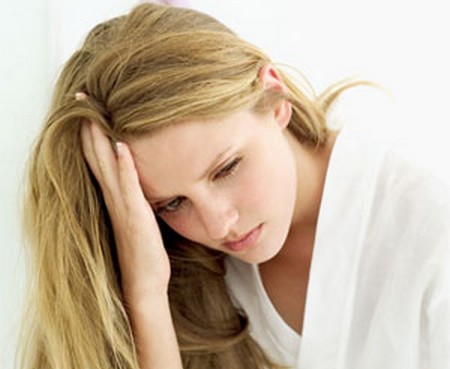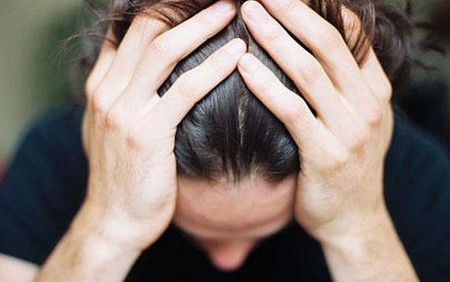Depression is a type of psychological disorder which is very common all over the world. Depression is a state where people feel very sad, down and anxious along with some physical symptoms like insomnia etc. A study shows that millions of Americans are affected by this psychological disorder. You can find a lot of examples where people are depressed like in your neighborhood, in any of your family member, or a friend or colleague.
Depression is a psychological disorder in which a person loses all his/her hopes, feeling sad, anxious, worthless, pessimistic, guilty and helpless. Physical symptoms may include the lack of concentration, lack of decision making, weigh loss or weigh gain, loss of appetite, lack of energy, and also lack of sleep. Depression is a state which requires immediate attention because in its extreme state it may urge people to commit suicide.
Depression can be of many types depending upon the symptoms and their severity. Some of the major types of depression are given below with brief description. Those who are experiencing depression may consult a mental health professional for treatment options like EMDR therapy.
Major Depressive Disorder
Major Depression Disorder is also known as Major Depression or Clinical Depression. It is sometimes also referred to as Unipolar Depression. This is taken as the most critical type of depression. The patient of major depression shows some severe symptoms. The symptoms of major depression usually last for two weeks. They appear every day and the patient feels depressed with sad mood lacking motivation and interest. The other prominent symptoms include the fatigue, weight loss, energy loss, disturbed mental condition, lack concentration, insomnia and a feeling of being worthless. An extreme stage of depression involve the planning or thinking about suicide. If such symptoms appears in a person for more than two weeks, he or she must be experiencing major depressive disorder and require immediate attention. A proper antidepressant may help to reduce the depression of a person.
Dysthymic Disorder
Dysthemia or dysthymic disorder is another type of depression. The term ‘dysthymia’ is a combination of two Greek terms: ‘dys’ which means ill or bad and ‘thymia’ which means mind or emotions. So, collectively it gives us a meaning related to illness of mind. This type of depression can be from low to moderate level which can continue for more than two years. However, the symptoms are less grave than major depression. If immediate attention is not given to the patient with dysthemia, the depression may transform to major depression during the course of the time.
Manic Depression
Manic depression or Bipolar Disorder is a type of depression which refers to the periods of depression and mania. Depression and mania are two different states which recur one after another or sometimes mania is there without a series of depression. Mania is a condition which is connected with the mood swings where the patient is extremely happy at one time and extremely depressed at the other. The mood swings persist for most of the time. This mood swing is always of severe nature and can last for about one week. There are certain other distinctive symptoms of this sort of depression which are quite rare in other form of depressions.
Post Partum Depression
This kind of depression is related to women as it mostly takes place after a child’s birth. The physical symptoms of this depression begin to appear in four weeks of child birth. The symptoms are of varying nature. The major reason behind this depression is that a lot of hormonal changes (usually called shifts) occur in the women body during the pregnancy period. These hormonal shifts acutely affect the mood. Such phenomenon is called ‘baby blues.’ The symptoms of depression can range from mild level to postpartum psychosis. If this will go unchecked, you may have the incidents like awful murders of the babies.
Seasonal Affective Disorder (SAD)
Seasonal Affective Disorder (SAD) is a type of depression which is associated with the occurrences of major depression during a particular season of the year such as winter, fall, summer etc. If a person experiences a weight gain or weight loss, insomnia, etc during one time of the year (season) and feel perfectly fine during the other, he or she must be under the influence of seasonal affective disorder.
Anxiety Depression
Anxiety depression is a kind of blended term where the properties of anxiety are blended with depression. A person in this type possesses the symptoms both of anxiety and depression. Anxiety depression is the amalgamation of anxiety and depression in real sense.
Atypical Depression
Atypical depression is a type of depression in which an individual believes that some outside or external events control their moods. In this type of depression, the mood of a person shifts in terms of positive events. These events can be a success, praise or attention. The duration of this sort of depression can be undefined as it can even persist for ever. The major symptoms of this depression include overeating, weight gain, excessive sleep, or fatigue.
Chronic Depression
Chronic depression is associated with major depression where symptoms persist for a longer period of time, to say for two years continuously.
Double Depression
Double depression is a condition where a person is suffering from two types of depression at the same time. For instance, when a person having major depression and dysthymia at the same time.
Endogenous Depression
This is a type of depression in which no obvious symptoms appear. It is taken as a depression which comes from within the body. This is the reason for giving its name endogenous depression.
Situational or Reactive Depression
Situational or Reactive Disorder is a condition which is best described as ‘Adjustment Disorder with Depressed Mood.’ There are situations arose in one’s life where it seems as if he or she is suffering from major depression, but in fact it is not major depression rather it is a temporary mental condition after any particular situation or event. For instance, when a person loses his/her job, he/she becomes depressed for a time till he/she finds another job and as soon as the new job is availed the depression period ends. So, this depression is known as situational or reactive depression which occurs in reaction to any event or situation.
Agitated Depression
Agitated depression is often associated with major depression and is described by agitation like physical and emotional restlessness, insomnia, and bad temper. It is quite different in terms of symptoms than other depressions where a person feels down mentally and physically.
Psychotic Depression
When the person is under depression because of some psychotic natured symptoms, it is called psychotic depression. In this sort of depression, the symptoms are usually unnatural, false or fake in nature such as hearing strange voices or having false believes etc.
Melancholic Depression
Melancholic depression is considered as the sub-type of major depression. In this sort of depression the person begin to lack enthusiasm and pleasure in everyday’s routine events or activities and don’t show any positive response towards positive events.
Catatonic Depression
It is another sub-type of major depression which is characterized by excessive purposeless movement. This depression involves high resistance to instructions, inappropriate voluntary movements, repeating others words, lack of voluntary movement, and lack of ability to respond to any specific environment.


